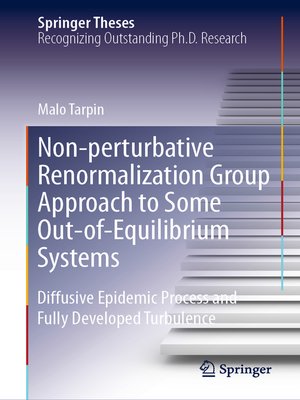Non-perturbative Renormalization Group Approach to Some Out-of-Equilibrium Systems
ebook ∣ Diffusive Epidemic Process and Fully Developed Turbulence · Springer Theses
By Malo Tarpin

Sign up to save your library
With an OverDrive account, you can save your favorite libraries for at-a-glance information about availability. Find out more about OverDrive accounts.
Find this title in Libby, the library reading app by OverDrive.



Search for a digital library with this title
Title found at these libraries:
| Library Name | Distance |
|---|---|
| Loading... |
This thesis presents the application of non-perturbative, or functional, renormalization group to study the physics of critical stationary states in systems out-of-equilibrium. Two different systems are thereby studied. The first system is the diffusive epidemic process, a stochastic process which models the propagation of an epidemic within a population. This model exhibits a phase transition peculiar to out-of-equilibrium, between a stationary state where the epidemic is extinct and one where it survives. The present study helps to clarify subtle issues about the underlying symmetries of this process and the possible universality classes of its phase transition. The second system is fully developed homogeneous isotropic and incompressible turbulence. The stationary state of this driven-dissipative system shows an energy cascade whose phenomenology is complex, with partial scale-invariance, intertwined with what is called intermittency. In this work, analytical expressions for the space-time dependence of multi-point correlation functions of the turbulent state in 2- and 3-D are derived. This result is noteworthy in that it does not rely on phenomenological input except from the Navier-Stokes equation and that it becomes exact in the physically relevant limit of large wave-numbers. The obtained correlation functions show how scale invariance is broken in a subtle way, related to intermittency corrections.







